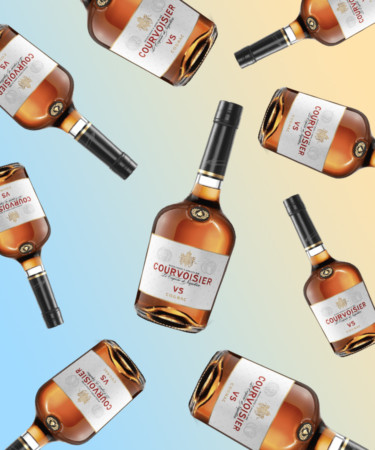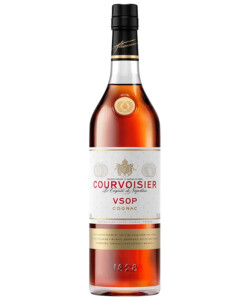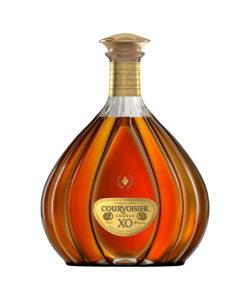Over the past two centuries, Courvoisier has established itself as one of the few household names in the cognac market. With roots in the suburbs of Paris, cognac is French in origin (all cognacs are legally required to be produced in the eponymous Cognac, France) but global in reach. Cognac, as of this January, finds its largest markets in the United States and China.
While Courvoisier today is a key member of Beam Suntory’s portfolio, it began as a family-owned operation, founded by business partners Emmanuel Courvoisier and Louis Gallois. Since then, it has passed through many hands — and while Courvoisier ceased to be family-owned early in its history, the cognac continues to bear Emmanuel’s surname on its bottles to this day.
Here are eight things you should know about Courvoisier.
It’s the Youngest of the ‘Big Four’
Courvoisier is a member of the exclusive “Big Four” club of cognac houses, where it’s joined by Hennessy, Martell, Rémy Martin. Founded in 1828, Courvoisier is the youngest of the group.
It Started as a Wine Producer
Emmanuel Courvoisier and Louis Gallois established the company first as both a wine and spirits producer in Bercy, a suburb of Paris, before their sons, Félix Courvoisier and Jules Gallois, moved the operation to Jarnac and established Courvoisier exclusively as a cognac producer.
The Cognac Is Anointed With Napoleon’s Approval
Common lore has it that Napoleon Bonaparte paid a visit to Courvoisier’s warehouses in 1811 and left with barrels of the cognac to bring on his ship en route to St. Helena. Courvoisier was thus named “the Cognac of Napoleon” — a nickname that has stuck ever since. His praise is a point of pride for the brand, and Napoleon’s image has been featured on limited-edition Courvoisier bottles.
Another Napoleon Brought the Cognac to Even Greater Prominence
Fifty years after Napoleon Bonaparte’s historic approval of Courvoisier, Napoleon III deemed the cognac the Official Supplier of the House of the Emperor. By this point, Maison Courvoisier was helmed by Félix and Jules Curlier, nephews of Félix Courvoisier who inherited the company from their uncle in 1866.
The French Celebrated the Eiffel Tower’s Opening With Courvoisier
Courvoisier was selected as the spirit of choice to celebrate the opening of the Eiffel Tower on March 31, 1889. A 2016 marketing campaign, “Toast of Paris,” paid homage to this milestone in the brand’s history by launching new bottlings inspired by France’s Belle Époque.
Ironically, the French Hardly Drink It
Despite Courvoisier being French in origin, 97 percent of the cognac is exported, as of 2013. This aligns with general export trends of the cognac category, which is primarily an exported spirit finding particularly enthusiastic audiences in the U.S., China, and, more recently, Canada.
It Has Rap to Thank for Its Popularity in the States
Busta Rhymes and P. Diddy’s 2001 anthem “Pass the Courvoisier” skyrocketed Courvoisier’s sales by 30 percent. Cognac saw additional references in rap throughout the early aughts, bringing the spirit to greater prominence in the U.S.
There’s a Whole Museum Dedicated to Courvoisier
Château de Courvoisier in Jarnac, France, offers on-premise tours, where visitors can learn about the history of the brand — and, of course, taste some cognac.


